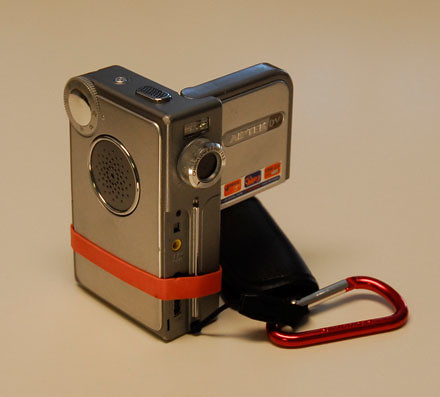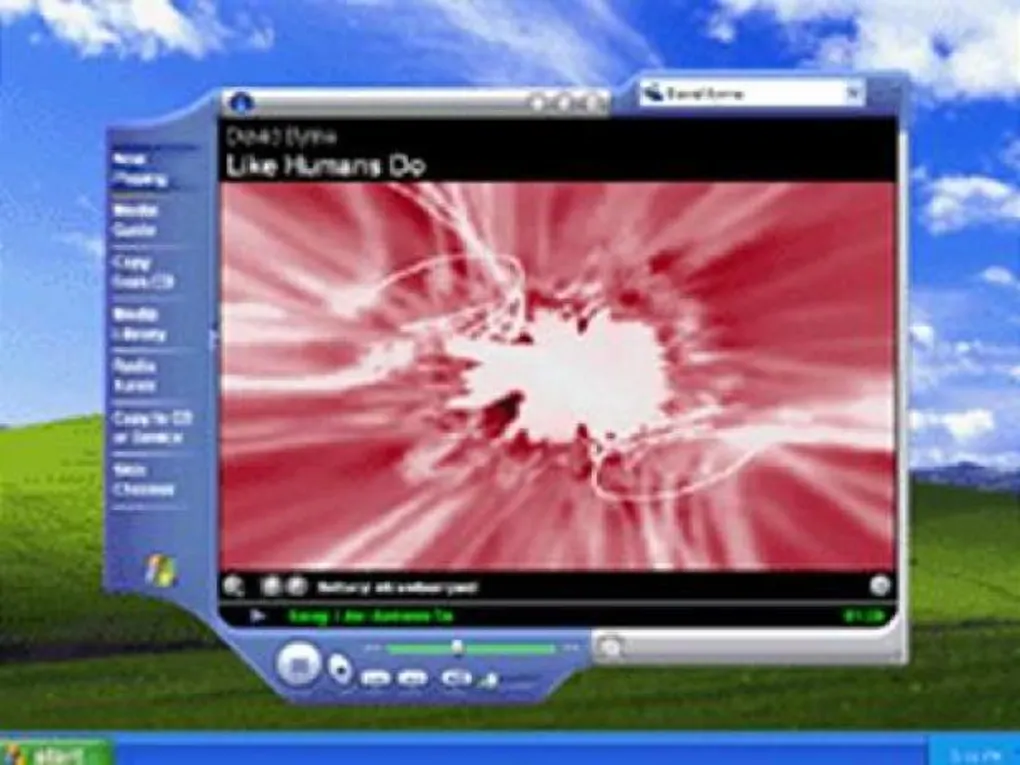A little more than a year ago, I purchased an Aiptek DV 4500, which I termed the Swiss Army camera. (See my initial review HERE.) Now that it’s been through Hell and back, I wanted to do a follow-up review.


What attracted me to the camera was the multiple functions: still photos, video, and MP3 playback, primarily. After a year of hard use, I’ve become hooked on several podcasts, so the MP3 player got the most use.
Unfortunately, the audio playback has many frustrating aspects. When I load the flash drive up with files, they must be all in the same folder. This is contrary to the natural way Itunes downloads them, so it’s a minor hassle. What takes more time is renaming files so I can tell them apart in the camera’s limited menu. As I mentioned in my earlier review, the fast forward is a pain, also.
Another problem is the control wheel on the side. If you bump it while listening to audio, it could switch to a function like camera or microphone, which halts playback. There’s a hold function to prevent this, but using hold means you can’t easily fast forward or rewind. When you turn off hold, the current file starts over, which is no good if you’re in the middle of an hour-long podcast.
So you’re probably thinking, “Well, what do you expect from a camera? It’s not going to have Ipod functionality.” Well, that’s probably correct. I’ve since purchased a Sansa player from Sandisk, which is pretty cool. I do miss the speaker, however. I could listen to the Swiss Army camera before bed each night without headphones, and that was fantastic. The Sansa has umpteen hours of battery life, though, which is a huge improvement. The Aiptek would play for about 3 hours when the batteries were new. After a year of using the same Sony rechargables every day, they’d only hold a charge for about an hour and a half.
I pretty much stopped using the video functions after a few experiments. It’s all right, but the audio it grabs is really poor. You need a lot of light for the video to show, and then the only use for the video is as low res web clips. I figured I would use it to aid in rotoscoping for animated projects, and I still might. I just haven’t got around to that yet. Also, the only program I could ever use to edit/convert the ASF files was Windows Movie Maker.
The MAJOR reason I would dissuade people from buying the camera is its still image function. It has a flash, but it doesn’t do a lot of good. Many pictures I take are so dark that they require Photoshop tinkering. The results usually end up resembling impressionist paintings rather than photographs. Not a terrible thing, but it’s not what I was expecting. The worst thing, though, is the “shutter release” button. It sticks. Sometimes I have to click it half a dozen times before it will agree to take a picture, and you have to push it HARD. This fighting to get the button to work results in a shaky picture or a puzzled audience if you’re taking a group shot. I always hesitate to hand the camera to someone and say “Here, take my picture.” Added to that, if you’re in a dim room, nothing shows up on the viewscreen. You have to trust that you’re pointing the camera right, because you won’t see anything until the pic is taken.
Writing this, it amazes me that I’ve limped along with the camera so long. I don’t really regret buying it, though. It’s been a fun toy, and I’ll continue taking pics with it. I’m not in a hurry to get a new camera. Once I dropped it, though, I knew it was time to get a new MP3 player.
Yes, I dropped it. Once. And now the battery compartment won’t stay closed. So I added a rubber band and removed the front panel to hold things tight. With this added jury-rigging, people I meet now tend to laugh at the camera rather than admire it.



What exactly is good about it again?